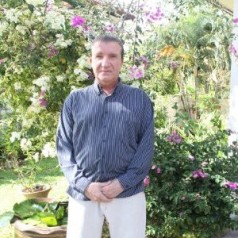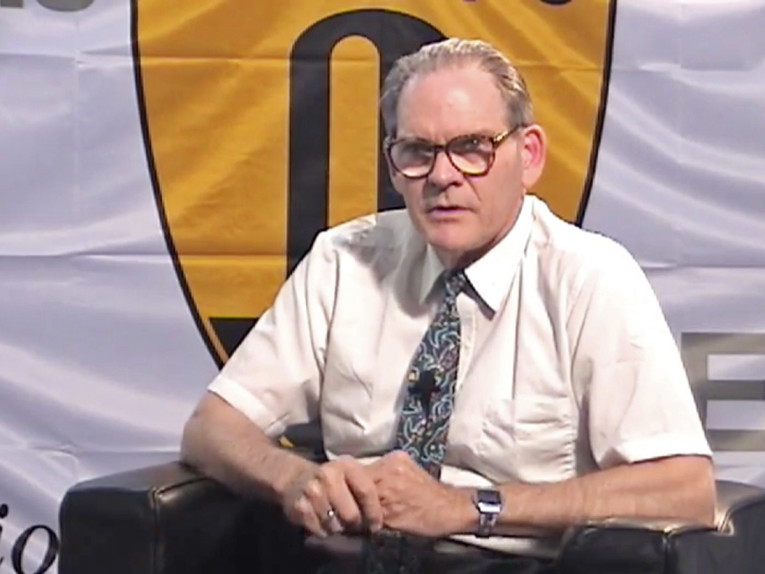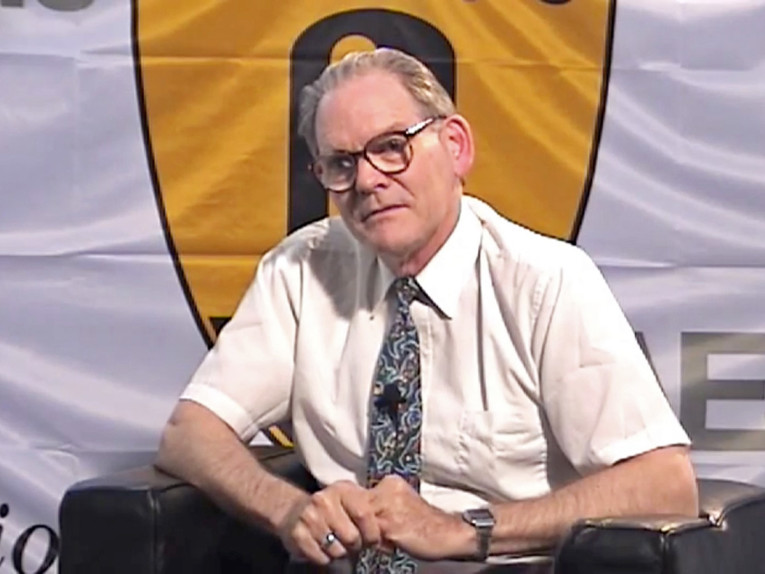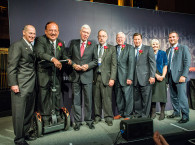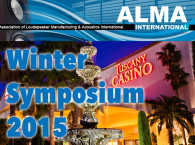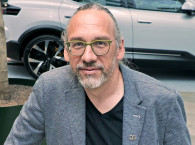Thiele and Small showed how sound produced by the loudspeaker at low frequencies could be modeled by a simple circuit analog. By using the T/S parameters in computer simulation models, users could design loudspeakers without having to physically build the enclosure. This approach is still widely used today. Richard Small has also maintained his friendship with Neville Thiele to this day.
Dr. Small earned a Bachelor of Science degree from the California Institute of Technology in 1956 and a Master of Science degree in electrical engineering from the Massachusetts Institute of Technology in 1958. He gained experience in electronic circuit design for high-performance analytical instruments at the Bell & Howell Research Center in California from 1958 to 1964. After a working visit to Japan in 1964, he moved to Australia, where he became interested in loudspeaker analysis and measurement and was awarded a Ph.D. degree by the University of Sydney in 1972. He taught for a number of years at that university, but resigned in 1986 to return to industry, as Head of Research at KEF Electronics Limited in Maidstone, UK, until 1993. He currently holds the position of Senior Principal Engineer with Harman/Becker Automotive Systems in Martinsville, Ind., where he is responsible for global loudspeaker measurement and analysis software.
Dr. Small is a senior member of the Institute of Electrical and Electronics Engineers and a member of the Institution of Engineers Australia. He is a fellow of the Audio Engineering Society and a recipient of the Society’s Publication Award, Silver Medal, and Gold Medal.
SM: Are you an Australian or an American citizen?
RHS: I was born and raised in California. My mother told me I was a fifth-generation Californian on her side. Australia gave me the opportunity and means to extend Neville Thiele’s groundbreaking work, and I love the place. I spent 21 wonderful years there. My wife, born in England, also has an Australian passport. With a total of 30 years outside my native country, I think I qualify as an adopted foreigner. But I have only a US passport.
SM: Do you consider yourself to be a loudspeaker “pioneer”?
RHS: Goodness, no. Just lucky. It really helps to be in the right place at the right time. If you can see me, it’s because I’m standing on the shoulders of Neville Thiele, Jim Novak, Leo Beranek, and others.
SM: What do you consider to be your greatest achievement in your career as an engineer?
RHS: Getting lucky again and finding a good wife.
SM: Could you explain your passion for loudspeakers to the readers?
RHS: I couldn’t call it passion, more a long-term interest. My father was an amateur pianist who played everything by ear, and he loved music and was keen on music reproduction. We had wired music all over our house in Altadena, Calif., and I helped to run the wires through basement, attic, drop spaces, and walls. I had a keen interest in electronics and built the amplifiers that drove our music “network.” Dad had a fine circular bench saw and built various enclosures for the living room loudspeakers, following the trends of the times.
One day, he found that the local lumberyard had a sale on 1¼˝ marine plywood for the price of quarter-inch. He bought a few sheets and then went wild and got some JBL components: a 130A 15˝ woofer, an eight-cell horn tweeter, and a “1200 cycle” crossover network to match. He built a beautiful 16ft3 corner enclosure (this was mono days) for the components. It had a 64 in2 port. It had to be the speaker system to beat all speaker systems. Trouble is, it never had good bass.
I never knew why until after I had done my research in Sydney and then had the opportunity in 1977 to measure the parameters of a 130A. The Qt was really low, about 0.2. It was designed for horn loading, not for direct-radiator use. The enclosure was beautiful though!
SM: How did you happen to meet Neville Thiele and Ernest Benson?
RHS: I’ll try to keep a long story short. When I worked at Bell & Howell, I met Andrew Nowina-Sapinski, an industrial designer who became my social mentor. He did a lot to humanize this awkward engineer. He went to Japan in 1963 and invited me to come along. Nine months later, we both moved to Sydney and I got a part-time job at The University of Sydney, as a teaching assistant in the electronics lab. Andy did consulting in product design.
One of his clients wanted a design for a loudspeaker system for a modular storage system, and Andy recommended me. I didn’t know how to design loudspeaker enclosures, but the university had an excellent engineering library, so I figured I could learn. I failed, initially. Then one of the professors suggested I should read Neville’s 1961 Australian paper, which I hadn’t found in my searching.
I read it. As Neville likes to quote Einstein when told that his theory of relativity was difficult to understand, “it isn’t difficult to understand, just difficult to believe.” That’s what Neville’s paper was. I got his references and studied them, and it was all correct, so I had to believe it. I tried it, and it worked! I wish I had a dollar for all the times other people have said the same thing to me about Neville’s paper.
Some time later, I went to a lecture that Neville gave and introduced myself. That was the start of a long and wonderful friendship. Of course, Neville knew Ern Benson, who edited (and wrote for) the AWA Review, the Australian version of the RCA Review. Ern’s loudspeaker papers are classics. He designed the first really successful electrically tapered arrays, using both amplitude and bandwidth tapering plus overall equalization, for the Sydney Opera House.

SM: Neville told me that the three of you were considered the “Australian Loudspeaker Mafia” (Voice Coil 1/05) at one time. What did he mean by that statement?
RHS: Well, there wasn’t any crime involved, unless you consider that level of fun criminal. And it wasn’t just the three of us. We were part of a fantastic family of audio devotees. Sydney just happened to have a number of outstanding people active at that time, and we all fed off each other.
Bob Frater, a professor at the University, was using radio-astronomy antenna theory and electronics to design directional loudspeaker arrays and innovative amplifiers, and he put a tweeter between two woofers long before anyone heard of the guy whose name is now attached to that arrangement. Cyril Murray, another lecturer at the university, had a keen interest in loudspeakers as well as doing superb amplifier designs. Louis Challis, an acoustical consultant who also did loudspeaker reviews for Australian magazines, was a regular contributor to discussions. We were a really lucky group.
SM: Your Ph.D. thesis at the University of Sydney was on the topic of loudspeaker modeling. Was this a first? I did a loudspeaker project for my MS in 1995 and some of my classmates asked why I was wasting my time with loudspeakers.
RHS: I was certainly not the first loudspeaker Ph.D. There was Frankort for a start. That was in cone modeling, which is much more difficult. But you are right. Loudspeakers are not considered to be leading edge. The smart guys go into more challenging and glamorous stuff. You have to really want (love it) to do audio.
When I decided that I really wanted to extend Neville’s work, it took a while to find a way to do it. I tried another university and was told that I could get funding for research in microwaves, but not audio. Finally, I was told that I could do the research at Sydney, but I would have to enroll for a Ph.D. to get a stipend. The wounds from my Master’s at MIT had healed enough by then that I went for it. It was just enough to live on, and I had the time of my life.
SM: A client in Malaysia recently asked me, “Where can one study to become a transducer engineer?” My reply was, “I don’t know.” Do you think loudspeaker and/or transducer engineering is respected at the technical universities as an engineering discipline?
RHS: Well, it’s certainly better than it used to be. There are some undergraduate courses available (e.g., at Bradford University in England). There are graduate courses too that you can find. Most people have to assemble it from a mix of physics, engineering, and acoustics. But like so much else, you can’t really become a transducer engineer by study alone. I have to say that I am not one. The theory helps a lot, but serious experience is the only way to acquire the rest of what you need to know. I do mean serious experience: a tough boss who really knows his stuff, and real challenges.
I had the good luck to work for several years for Laurie Fincham at KEF. He doesn’t accept half measures. I learned volumes. The engineers there who came with physics and electrical/electronic engineering backgrounds to do transducer work, he turned them into excellent transducer engineers.
SM: Do you do any teaching or have you considered teaching? You certainly seem to have the qualifications to teach BS, MS, and/or Ph.D. university candidates.
RHS: After my Ph.D. studies, I taught for 12 years at the University of Sydney. I taught electronics mainly, but for my sins I had to teach Fields and Waves for two years. I hadn’t done well at that as a student at Caltech. As they say, if you want to learn, teach. I did get to teach an evening post-graduate course in electroacoustics twice. That used up all the interested graduates in Sydney. Meanwhile, I supervised one Ph.D. student, John Bunton, who did a marvelous thesis on loudspeaker characterization but ended up as a brilliant radio astronomer. As part of my responsibilities at Harman/Becker, I try to help the younger engineers and student interns.
SM: How do you envision the role of the AES and ALMA with regards to the loudspeaker industry in the future?
RHS: The AES has long been a center of interest for developments in loudspeaker transducer and system design. It is one of the areas of constant publication of papers in the Journal as well as at conventions. There is no letup in this activity, and the rise of importance of automotive audio is adding fuel to the already high interest in professional and domestic loudspeaker developments. All the industry benefits from these activities.
I have not personally been active in ALMA, but have observed its efforts to remain vital, as the manufacturing activity has made major shifts geographically. My colleagues at Harman and our suppliers have given them great support.
The AES is international, very strong, and still growing. Its mission includes continuing support for audio education through its publications, conferences, conventions, and student sections. I don’t think either organization is threatened by lack of interest or by diminished need for what they provide. If they are threatened, it is by the global social and political changes that make competition much tougher and selfishness more profitable in the short term than the traditional attitude of professional togetherness.
SM: Other than yourself, whom do you consider to be currently conducting important research into improving loudspeaker design?
RHS: My current activities couldn’t be called research. I mainly support other, younger minds by providing the tools for making and processing accurate acoustic measurements for their designs. Major technological innovations are few and far between these days. Most patents are in the area of unusual applications and ingenious constructions, as well as new uses for old ideas. Really brilliant ideas don’t seem to go very far if they cost more than traditional technology. Of course, if we find ways to save size, energy consumption, weight, or cost, we patent it for competitive reasons.
The most significant advance I have seen lately is the application of Constant Beamwidth Transducer technology that Don Keele has been presenting at AES conventions. This is bound to have a major impact on both professional and domestic loudspeakers.
SM: Are you familiar with the research and development work of Dr. Wolfgang Klippel? It seems to be based on your work with the addition of nonlinear parameter-based measurement system. Any comments?
RHS: I mentioned earlier that my major interest is in measurement and characterization of loudspeakers. In this field, Klippel has been the leading brains for years. I don’t think he needed to borrow anything from me; he already had a good understanding of linear parameters. He took up the challenge of understanding the nonlinear behavior of transducers almost before the rest of us had completed a satisfactory description of the linear behavior.
These days, no loudspeaker lab is complete without a set of his equipment for linear and nonlinear characterization of transducers. And now he has extra software for auralization and simulation that is just amazing. He is also very supportive of the Standards work in AES and elsewhere. Keep watching whatever he publishes—you will learn something, for sure.
SM: What is your opinion on the new generation of engineering computer aid design tools such as Finite Element Analysis and Boundary Element Method? They seem to have added the discipline of Vibroacoustics to what the loudspeaker engineer must understand.
RHS: I’m afraid they have really raised the bar for the aspiring loudspeaker designer. There is a real problem here because to fully understand what these tools can do and how to use them intelligently takes a lot of study, or “learning curve.” Early programs, adapted from other disciplines, were very difficult to use. There are more user-friendly tools appearing now, but applying them blindly is full of risks. And even with the best programs, really detailed analysis is still enormously time consuming, both for setup and for computing time.
There is a general feeling that with the power we have on our desktops today, designing a loudspeaker and predicting exactly all of its linear and nonlinear behavior should be within the reach of everyone. We should be able to design completely in the virtual world and then build the product and have it perform exactly as planned. Well, it just hasn’t happened yet.
But barring global catastrophe, it may happen eventually. Engineers don’t quit until they understand.
SM: What do you consider to be the most important design criteria for a loudspeaker engineer, linearity, bandwidth, ease of manufacture... ?
RHS: And what about durability and cost? They are all important. In its formal wear, engineering is noble applied science. In its shorts, it’s about compromise: political, performance, and otherwise.
Ease of manufacture is the rock on which many clever designs have foundered. You may find it easy to put together in your lab, but when you go across the hall to Manufacturing, and the guy there says he can’t build it in his factory with his equipment, you learn a valuable lesson.
The loudspeaker engineer needs a wide range of skills and abilities, and some of them only get learned on the job, sometimes with a bit of pain.
SM: Could you comment on the migration of the loudspeaker industry to Asia and specifically China?
RHS: Is that a question about business or about philosophy? I’m not well qualified in either. I have seen manufacturing jobs move to lower-cost countries quite a few times since my youth. Do you think it will stop in China?
It seems to me that there are always problems not related to costs that take the shine off the move, and then eventually the costs rise and another place looks attractive. There always seems to be a supply of capital to fund the moves, but I suspect that the energy requirements (and costs) may soon outpace our enthusiasm. If global business can’t find a way to live within the energy budget that our planet and our sun provide, life (and engineering) will become a lot less fun. And the manufacturing that is left will remain where it is when the music stops.
SM: What is your favorite loudspeaker system?
RHS: I’ve had a few over the years, but the ones that still amaze me (and I still use them) are the KEF speakers that Laurie Fincham designed when I worked there. I have the 103/4s. I bought my brother a pair of 105/3s at the same time, but I don’t need to play that loud.
There were so many innovations in those products that it was really courageous to throw it all into a new product at once. Bandpass dual woofers with the force-canceling rod, mounted to also cancel the even-order nonlinearities. Separate enclosure with frameless mid-woofers, and the coincident-mounted upper midrange and tweeter. Plus the conjugate network to give a resistive input impedance, and the active equalizer to adjust the room balance and extend the bass if you wanted it. It all worked beautifully, and they have the well-balanced, musical spectral behavior that Laurie always delivered.
My rear/surround channels (and subwoofers) are Allison Ones that I bi-wired for this use. There’s another product, based on theoretical work by Roy Allison, that came out with innovative features that worked superbly.
SM: Do you agree that some loudspeaker technologies seem to go in and out of fashion? A few examples being metal cones, planar magnetic transducers, and under-hung voice coil transducers.
RHS: Indeed, some do. Sometimes it’s just that, recycled with new hype in the service of marketing. Other times it looks the same, but might actually be the result of new research or understanding that makes it work properly for the first time. I’ve only experienced one cycle of the truly underhung coil.
When I was in Sydney, I had a chance to measure some of the JBL “LE” series of drivers. I was working on an instrument to measure modulation distortion at the time, and I was just amazed at the constant value of Bl that this design delivered. Rock steady until the coil reached the end of the gap. You just can’t get that consistency with overhung coils because of the ever-present fringing flux. The coil reactance is lower and more constant too. Of course, it is always more expensive for a given efficiency, because at any given instant, most of the flux isn’t working for you. Is it back? I say bravo!
SM: Do you see any new or old trends in loudspeaker design and development in the next ten years?
RHS: I’m not a seer. Moving-coil technology (including planar printed coils) is pretty “mature.” Shots in the arm like neodymium magnets don’t come along too often, but steady improvements with new materials will continue. Personally, I think that of all the conventional driver components, suspensions are the one still in a primitive stage. I am amazed that designers are still content to use bits of paper and fabric with properties that vary wildly with the environment. It would be nice to have a breakthrough here that would give us at least the same kind of environmental stability that magnets, coils, and cones achieve.
SM: Do you have any advice for new and aspiring engineers within the loudspeaker industry?
RHS: Get set for a rough ride. That won’t deter anybody, because people who go in for this don’t choose it for the glamour. They have to be a bit nuts about loudspeakers, so they are hard to discourage. But they do have to realize that major advances don’t appear in your dreams. You need broad education and experience. Physics, mathematics, electronics, magnetics, mechanics and signal processing, plus good computer skills; all are needed, plus people skills to handle the competition and politics. But it’s great fun, and on the plus side, the challenges aren’t likely to disappear any time soon, so there will be jobs.
SM: I used to work at Bose in transducer R&D (TRES). Is there still a rivalry between Harman and Bose?
RHS: Good rivalries never die. Without competition you get complacency. Bose is an aggressive competitor with great resources and talent and amazing marketing successes. That has kept Harman on its toes. I believe that good engineers love challenge and thrive on it, so let the competition (and rivalry) continue.
SM: Will the moving coil audio transducer ever become obsolete?
RHS: That would be hard to imagine, but who knows? Isn’t the basic technology 130 years old now? I remember reading a paper from early in the last century that described the manufacture of loudspeakers as a “house on fire” problem: we are making them by the millions, but don’t yet fully understand how they work!
These days we are making great strides in understanding how they work, and we can make them for less cost than ever. They work very satisfactorily in good system designs. To displace them, something new will have to beat them clearly on cost (including energy consumption for manufacture) and not sacrifice performance.
SM: Arthur Ngiam, former Chairman of the AES Singapore Section, said something interesting to me recently. He said that the audio problem is essentially “solved” from the CD/DVD input to the output stage of the power amplifier; however, the loudspeaker remains nonlinear. Would you care to comment on his statement and when do you think the digital transducer will become a reality?
RHS: I think that’s a pretty universal view. My favorite description of a loudspeaker is “a nonlinear mess.” We can deliver a very satisfactory amplified reproduction of a microphone signal at the output of an amplifier. Enough of it to electrocute ourselves these days. But it seems we can’t be satisfied until we can turn it into enough perfectly clear sound to deafen ourselves.
There are numerous things that set loudspeakers apart from the rest of the sound reproduction chain. The many nonlinearities are one area. The fact that once we get past those clearly identifiable input terminals, we can no longer identify another set of terminals as the “output” is another.
I know I should doff my hat to those brave souls attempting to come up with a viable, truly “digital” loudspeaker. But so far the results I have seen have been more amusing than inspiring. The challenge is enormous. You still have to move large amounts of air at low frequencies. You still have to maintain the resolution of the least significant bit in today’s digital recordings. And you have to maintain the broadband directivity and spatial imaging for multi-channel recordings. These are serious physical and geometric challenges.
SM: Have you ever visited Phuket, Thailand? Please accept my invitation and try to convince Neville to come along. It’s on the way to Australia. Just stop by and say hello.
RHS: Never been there, and would love to. I have fond memories of a lucky trip in the seventies to Bangkok (the old Erewan hotel, complete with elephant) and Ayutiya. I shall take it up with Neville.
Interviewer’s Comments:
I hope that as you read through Richard H. Small’s answers and comments, the characteristics of wisdom and kindness blended with brilliance and diligence come to mind. Dr. Small’s accomplishments speak for themselves; however, when Dr. Small speaks he articulates such that it is clear; he is in a class with but a few of the finest men this industry has ever seen, a true gentleman.
I cannot help but say that Dr. Small reminds me of Mr. Neville Thiele a bit, but the wit is clearly more “American” with a similar adventurous spirit and natural frankness in their responses. Finally, but perhaps most important, is that Richard Small exemplifies that engineering is a life-long learning experience. VC
This article was originally published in Voice Coil, 2006.


